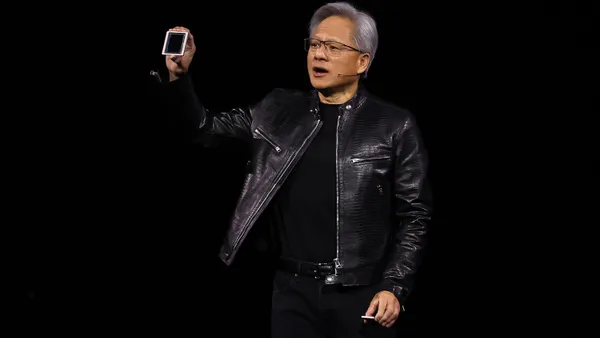The modern enterprise has evolved to emphasize user-facing technology development and deployment, whether the user is internal or a consumer.
Infrastructure, in turn, is left somewhere at the bottom of the food chain, slow to evolve and relegated to the role of an enterprise workhorse.
The different departments and application development areas of a business all rely on infrastructure, which includes everything from networks to databases to, increasingly, the cloud, said Daniel Schmutz, CTO COO of Credit Suisse, who is responsible for the global organization that takes care of all the infrastructure at the financial services company.
But Credit Suisse realized the model it's running for infrastructure right now is difficult to perceive in the future. To remain relevant, the infrastructure of Credit Suisse needs to become more service-oriented and aligned with customer needs.
Really, infrastructure services needed to start operating as its own business, Schmutz said, in an interview with CIO Dive.
Last fall, Credit Suisse turned to Technology Business Management (TBM), a taxonomy which allows for more in depth understanding of technology expenses and investments.
From the CIO's view, the spending methodology can help IT organizations understand potential duplicate costs and outline the business case for a technology project. This is particularly important for enterprises as they migrate to the cloud. Understanding where costs are associated can help reduce unnecessary, redundant spending.
TBM found an early home in financial services because the sector was already accustomed to using data to manage and calculate product profitability.
Though financial services companies did not call it TBM, they had basic standards in place and used data to understand products' profitability, said Bryan Mueller, director at Information Services Group, in an interview with CIO Dive.
TBM allows for decision-based outcomes rather than making long-term tech investment decisions based on "anecdote and feeling."

David Shive
CIO of the General Services Administration
The federal government, too, became a sector pushing to employ TBM to better understand the cost of vast, legacy technology portfolios.
Stakeholders outside agencies call for transparency and clear explanations of technology costs — whether that's officials from the White House or on the Hill, said David Shive, CIO of the General Services Administration, speaking Wednesday at a TBM conference in Washington. The framework allows for decision-based outcomes rather than making long-term tech investment decisions based on "anecdote and feeling."
The methodology is picking up steam among CIOs and other IT business decision makers because it encourages the overarching philosophy that technology departments should operate like a business. With that comes a delivery-based view of technology.
TBM in action at Credit Suisse
Used simply as a technology backbone, Credit Suisse's infrastructure group was not aligned with the outputs and outcomes of different businesses inside of the organization. For example, infrastructure was applied globally whereas application development areas were present in every line of business.
With a limited amount of product management ownership, the infrastructure group realized it needed to meet more customer needs, and be accountable and responsible for services end-to-end. In that model, infrastructure needs would be tied directly to a product.
Heavily involved in bank operations, Credit Suisse's infrastructure group only used 15% of its $1 billion budget to change the bank, Schmutz said. The other 85% went to simply running the bank.
It was extremely difficult for the infrastructure group to project technology business cases moving forward, which added value to the bank instead of simply serving as the "infrastructure provider," Schmutz said. "In other words, we said we need to transform our organization, make it [a] more value-driven, extremely customer-oriented company."
A massive undertaking, Credit Suisse's infrastructure group began to apply TBM in parts. The first step was really understanding the requirements for internal customers and for the business.
The company concluded then that infrastructure's future operating model is more related to becoming a "broker of services" rather than a pure maker or creator of established and configured hardware and software, Schmutz said.
In order for TBM to work, it needs to be a joint implementation between the finance and technology house, a marriage of the responsibilities of the CFO and CIO, according to Shive. Without it, any moves toward increasing cost transparency could be derailed because there will be a lack of cross-department understanding of long-term investment.
For example, GSA still uses a 25-year-old mainframe to run some of infrastructure. Because of TBM, Shive understands the unit costs and knows that if he modernizes it, the cost per user would go up, but user presentation would not change making a migration wasteful.
'It's not all roses and it's not easy'
Business leaders across sectors are looking toward solutions or methodologies that could make it easier to undergo large-scale transformation efforts. Whether it's a financial-based approach to technology with TBM or a clearly outlined business structure and operations found in enterprise architecture, leaders will adopt the strategy that best meets their business' needs.
But success is not guaranteed. "It's not all roses and it's not easy. Everybody conceptually gets that when you start this, you're going to have data problems," said Mueller. "Your model and your output is only going to be as good as your data."
The lack of perfect data will stop organizations from moving to adopt a spending methodology. But as soon as companies start uncovering data issues, they will address them, according to Mueller. Understanding infrastructure costs will be a starting point with the taxonomy for most organizations; migrating the rest of IT to TBM will come in time.
"The first thing we need to do is bring everything together. That's the foundational work ... but if that foundation is not proper, then all the data you have is crap."

Daniel Schmutz
CTO COO of Credit Suisse
To implement TBM, "don't wait. Just get started now," Shive said. Once the business value is derived, organizations can start iterating and adding incremental change.
Stakeholders, however, will become invested because of the conceptual and financial transformation TBM has to offer. The C-suite has responded positively to TBM because "they realized we are able to help reduce the cost of the bank," Schmutz said.
Credit Suisse is in a three year cost reduction program at the same time it is trying to increase revenues. The C-suite likes the cost reduction element of TBM because technology departments are always a huge cost producer.
Early in the stages of TBM adoption, Schmutz plans to return to the C-suite in Q3 or Q4 with the foundation needed to implement the methodology. From there, the organization can extend TBM step by step.
"The first thing we need to do is bring everything together. That's the foundational work. Some of my friends underestimate that effort," Schmutz said. "But if that foundation is not proper, then all the data you have is crap."




















